BCL9 is an essential component of canonical Wnt signaling that mediates the differentiation of myogenic progenitors during muscle regeneration
- PMID: 19699733
- PMCID: PMC3259687
- DOI: 10.1016/j.ydbio.2009.08.014
BCL9 is an essential component of canonical Wnt signaling that mediates the differentiation of myogenic progenitors during muscle regeneration
Abstract
Muscle stem cells and their progeny play a fundamental role in the regeneration of adult skeletal muscle. We have previously shown that activation of the canonical Wnt/beta-catenin signaling pathway in adult myogenic progenitors is required for their transition from rapidly dividing transient amplifying cells to more differentiated progenitors. Whereas Wnt signaling in Drosophila is dependent on the presence of the co-regulator Legless, previous studies of the mammalian ortholog of Legless, BCL9 (and its homolog, BCL9-2), have not revealed an essential role of these proteins in Wnt signaling in specific tissues during development. Using Cre-lox technology to delete BCL9 and BCL9-2 in the myogenic lineage in vivo and RNAi technology to knockdown the protein levels in vitro, we show that BCL9 is required for activation of the Wnt/beta-catenin cascade in adult mammalian myogenic progenitors. We observed that the nuclear localization of beta-catenin and downstream TCF/LEF-mediated transcription, which are normally observed in myogenic progenitors upon addition of exogenous Wnt and during muscle regeneration, were abrogated when BCL9/9-2 levels were reduced. Furthermore, reductions of BCL9/9-2 inhibited the promotion of myogenic differentiation by Wnt and the normal regenerative response of skeletal muscle. These results suggest a critical role of BCL9/9-2 in the Wnt-mediated regulation of adult, as opposed to embryonic, myogenic progenitors.
Figures
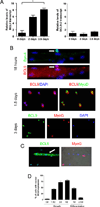
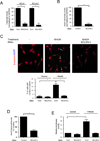
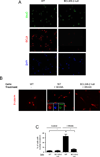
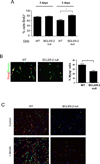

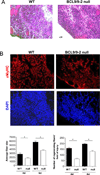

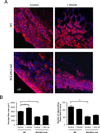
Similar articles
-
Hypoxia-inducible factor 1α induces osteo/odontoblast differentiation of human dental pulp stem cells via Wnt/β-catenin transcriptional cofactor BCL9.Sci Rep. 2022 Jan 13;12(1):682. doi: 10.1038/s41598-021-04453-8. Sci Rep. 2022. PMID: 35027586 Free PMC article.
-
BCL9-2 binds Arm/beta-catenin in a Tyr142-independent manner and requires Pygopus for its function in Wg/Wnt signaling.Mech Dev. 2007 Jan;124(1):59-67. doi: 10.1016/j.mod.2006.09.006. Epub 2006 Sep 30. Mech Dev. 2007. PMID: 17113272
-
The function of BCL9 in Wnt/beta-catenin signaling and colorectal cancer cells.BMC Cancer. 2008 Jul 15;8:199. doi: 10.1186/1471-2407-8-199. BMC Cancer. 2008. PMID: 18627596 Free PMC article.
-
Cross-talk of WNT and FGF signaling pathways at GSK3beta to regulate beta-catenin and SNAIL signaling cascades.Cancer Biol Ther. 2006 Sep;5(9):1059-64. doi: 10.4161/cbt.5.9.3151. Epub 2006 Sep 4. Cancer Biol Ther. 2006. PMID: 16940750 Review.
-
The Wnt/beta-catenin pathway in adrenocortical development and cancer.Mol Cell Endocrinol. 2011 Jan 30;332(1-2):32-7. doi: 10.1016/j.mce.2010.11.014. Epub 2010 Nov 20. Mol Cell Endocrinol. 2011. PMID: 21094679 Review.
Cited by
-
The Nuclear Receptor and Clock Repressor Rev-erbα Suppresses Myogenesis.Sci Rep. 2019 Mar 14;9(1):4585. doi: 10.1038/s41598-019-41059-7. Sci Rep. 2019. PMID: 30872796 Free PMC article.
-
Hypoxia-inducible factor 1α induces osteo/odontoblast differentiation of human dental pulp stem cells via Wnt/β-catenin transcriptional cofactor BCL9.Sci Rep. 2022 Jan 13;12(1):682. doi: 10.1038/s41598-021-04453-8. Sci Rep. 2022. PMID: 35027586 Free PMC article.
-
Pax6-dependent, but β-catenin-independent, function of Bcl9 proteins in mouse lens development.Genes Dev. 2014 Sep 1;28(17):1879-84. doi: 10.1101/gad.246140.114. Genes Dev. 2014. PMID: 25184676 Free PMC article.
-
Identification of satellite cells from anole lizard skeletal muscle and demonstration of expanded musculoskeletal potential.Dev Biol. 2018 Jan 15;433(2):344-356. doi: 10.1016/j.ydbio.2017.08.037. Epub 2017 Dec 25. Dev Biol. 2018. PMID: 29291980 Free PMC article.
-
Teaching an old dog new tricks: reactivated developmental signaling pathways regulate ABCB1 and chemoresistance in cancer.Cancer Drug Resist. 2021 Jun 19;4(2):424-452. doi: 10.20517/cdr.2020.114. eCollection 2021. Cancer Drug Resist. 2021. PMID: 35582031 Free PMC article. Review.
References
-
- Anakwe K, Robson L, Hadley J, Buxton P, Church V, Allen S, et al. Wnt signalling regulates myogenic differentiation in the developing avian wing. Development. 2003;130:3503–3514. - PubMed
-
- Belenkaya TY, Han C, Standley HJ, Lin X, Houston DW, Heasman J, Lin X. pygopus Encodes a nuclear protein essential for wingless/Wnt signaling. Development. 2002;129:4089–4101. - PubMed
-
- Borello U, Berarducci B, Murphy P, Bajard L, Buffa V, Piccolo S, et al. The Wnt/beta-catenin pathway regulates Gli-mediated Myf5 expression during somitogenesis. Development. 2006;133:3723–3732. - PubMed
Publication types
MeSH terms
Substances
Grants and funding
LinkOut - more resources
Full Text Sources
Medical
Molecular Biology Databases
Research Materials

